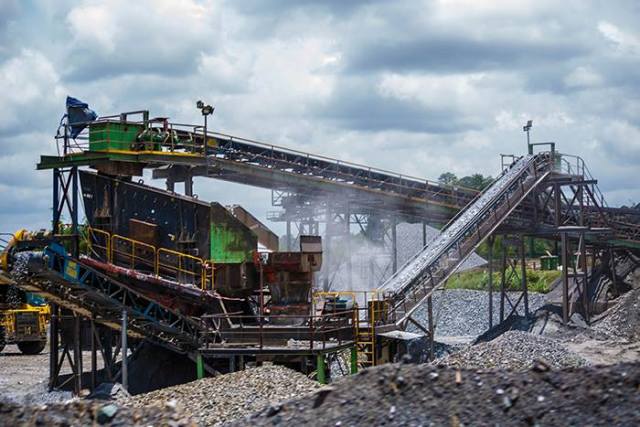 Poor countries with rich mines suspect that owners are making off with wealth that belongs to the state, and see this as a reason to control them directly [Photo Ghana Chamber of Mines Facebook]
Poor countries with rich mines suspect that owners are making off with wealth that belongs to the state, and see this as a reason to control them directly [Photo Ghana Chamber of Mines Facebook]
[This is an excerpt from an article in the current edition of The Round Table: The International Journal of Commonwealth Affairs.]
In 1973 Ghana had about twenty gold mines of all sizes when a de facto nationalisation (along with a state-controlled gold price and a raft of exchange controls) was implemented. A wild increase in price followed but Ghana was unable to respond to this, and output shrank from over 20 tons a year to under ten tons thereafter.
It was not until the late 1980s that a retreat from state control began and a recovery in output quickly followed. This climb was dramatic and the return of companies willing to fund exploration meant that many new mines were opened. In 2018 Ghana exported 130 tons of gold.
Tanzania, under Julius Nyerere, effectively nationalised all significant private businesses with his ‘Arusha Declaration’ of 1968 and the 30 small gold mines then operating all closed. In their place artisanal miners mined out the pillars supporting the underground workings of these mines and fanned out across the country seeking – and finding – new ones. This gold too was smuggled out, Rwanda and Kenya in this case suddenly becoming significant gold exporters. In 1989 the Shilling was floated, the private ownership of mineral resources was restored and recovery began, with an output of 45 tons being achieved in 2018.
Zambia is of course, famous for its copper resources. The Matero declaration of 1972 announced the intention of the state to acquire the mines, which were bought (not seized) from their multinational owners a couple of years later. Output was then about 600,000 tons annually. Thereafter, for the next 25 years, a slow decline in output resulted in these enterprises having their auditors question if they were ‘going concerns’. By the year 2000 less than 200,000 tons of copper was being produced. Under fierce pressure from creditors and the World Bank the mines were sold to the private sector, sometimes for peppercorn amounts. Production rebounded and new mines started, with Zambia producing 860,000 tons of copper by 2018.
And Zimbabwe? This sad country may have had a change in administration, but not a true regime change. The data from Harare has long been unclear; it is not possible to get a reliable US dollar value for its exports, mineral or otherwise, and the only estimates available are those from the World Bank and United Nations. These are given in terms of mining’s probable contribution to GDP.
Interestingly, the figures show a similar pattern to the other three countries, with a collapse after Independence in 1980 and a recovery about twenty years later. However, unlike the other countries Zimbabwe had a very diverse mining sector, producing over thirty different metals and minerals, and the recovery is due to just one of these – platinum.
The reason lies in a new section of the mining law, which allows major projects with an investment of over $100 million to operate, in effect, in a dollar currency bubble. Insulated therefore from the awful vagaries of the Zimbabwean currency, and freed from exchange and price controls, investment arrived.
This story is not over yet, but the experience of all four countries drives home the fact that governments have it in their power to destroy their mining industries by attempting to control them, directly by nationalisation or indirectly by currency and commodity pricing. Leave them alone and they will flourish.
Caption: Poor countries with rich mines suspect, sometimes with reason, that the owners are making off with wealth that properly belongs to the state, and see this as a reason to control them directly.
John Hollaway is a mining consultant based in Zimbabwe.
Opinion pieces do not reflect the position of the Round Table Editorial Board.



